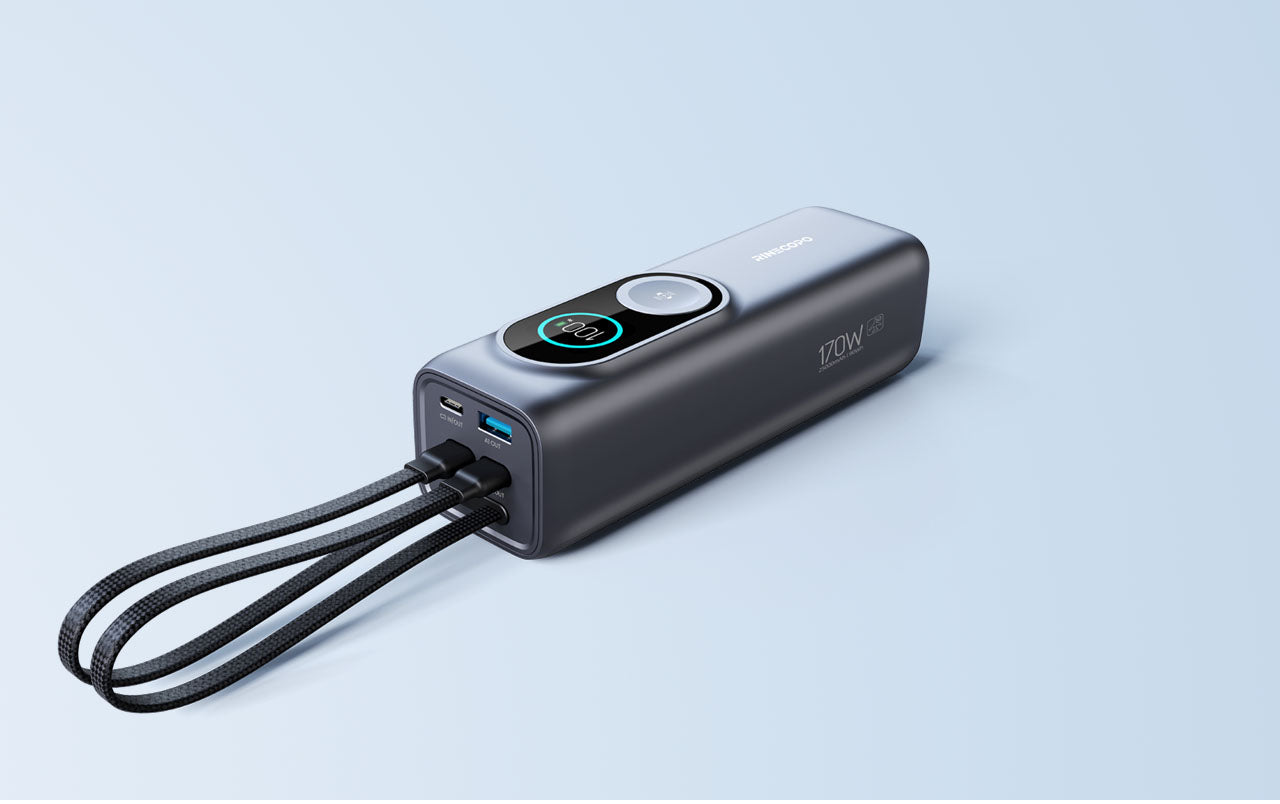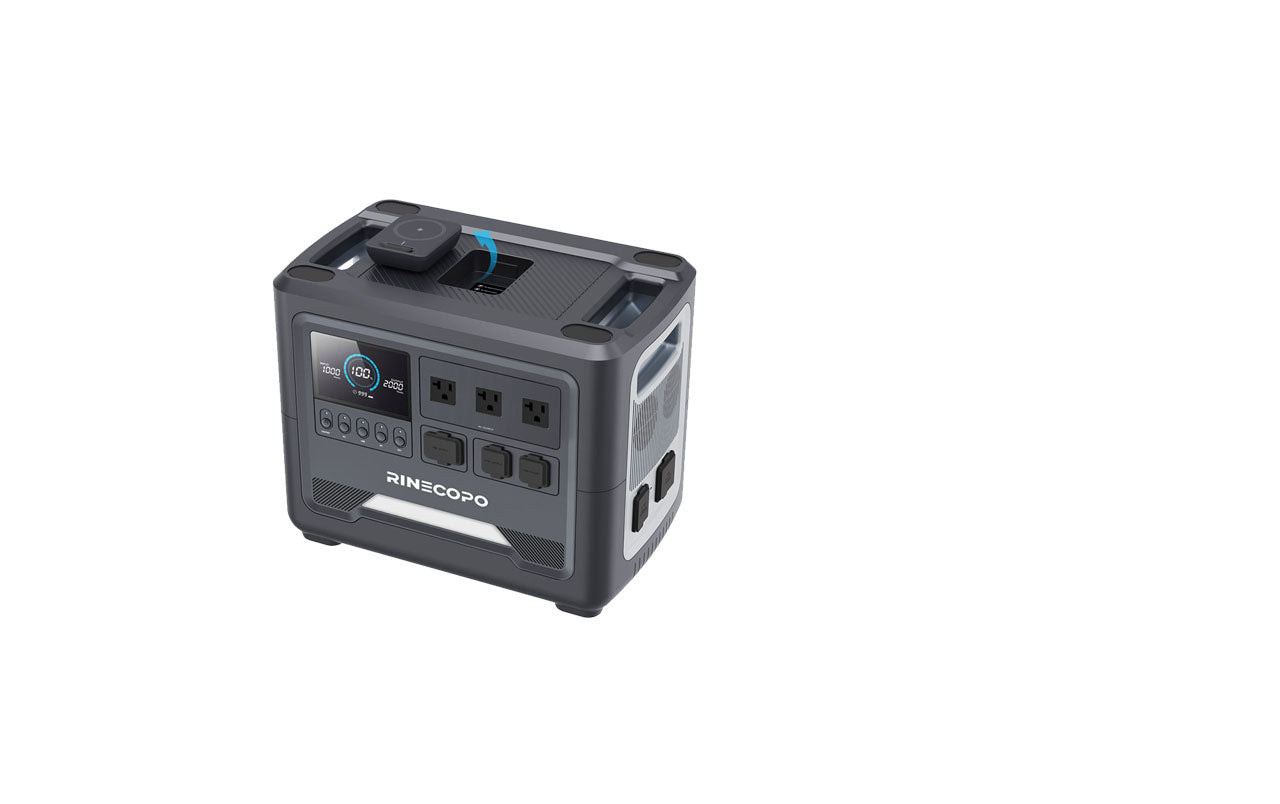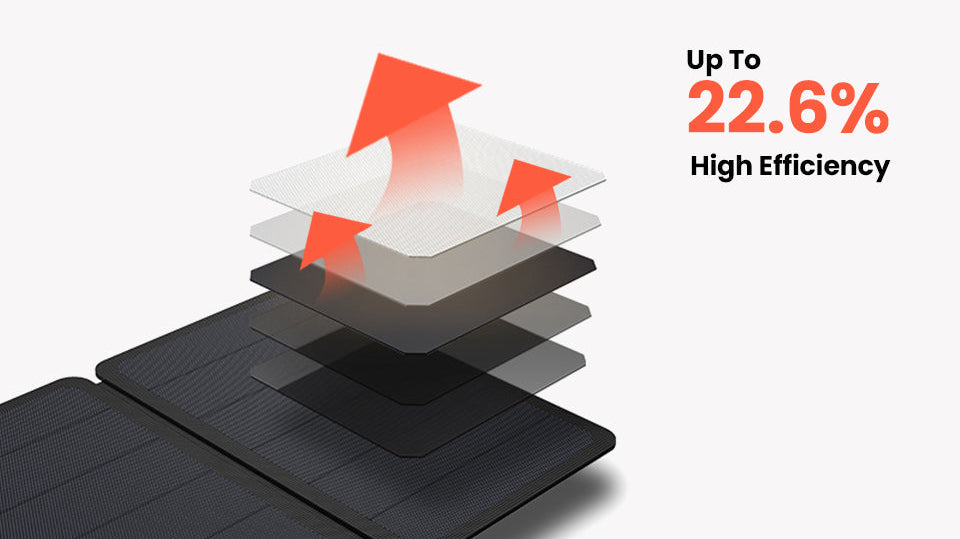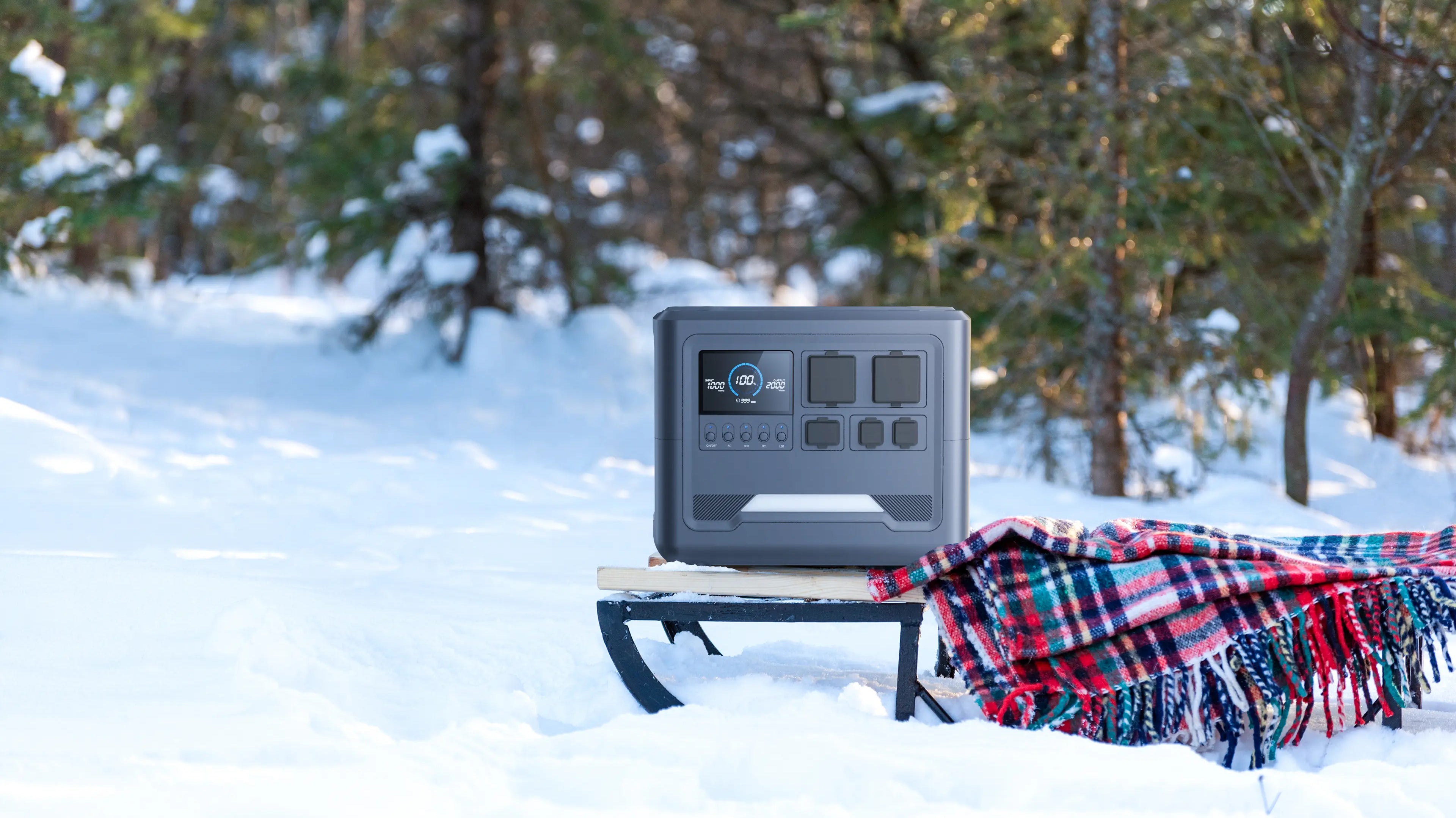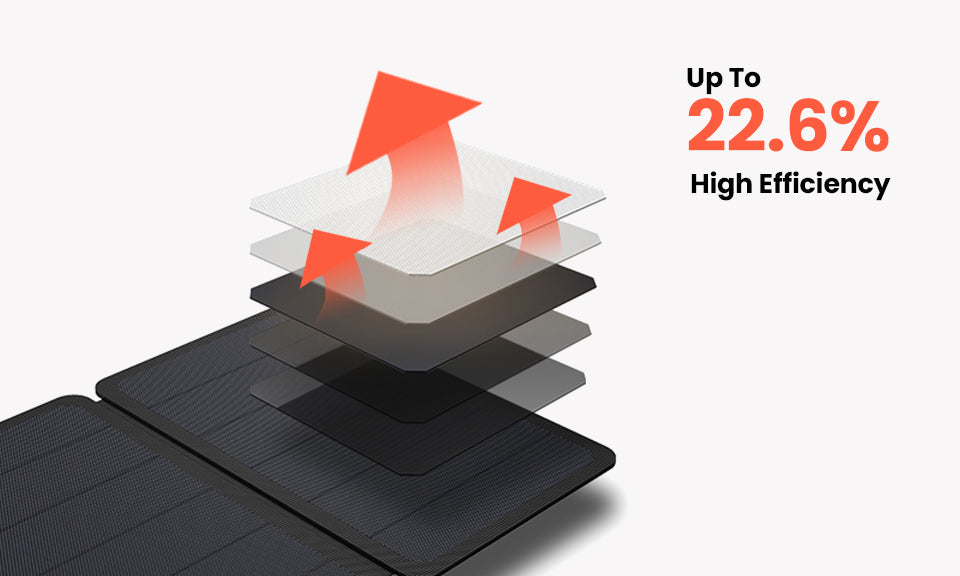
Solar power is booming across the United States. From California rooftops to Texas ranches and Colorado cabins, homeowners and RV travelers alike are embracing clean energy. But even with top-rated panels, many users notice that their solar systems don’t always perform at peak efficiency.
The truth is, your solar panel’s output depends on more than just sunlight—it’s about how you install, maintain, and optimize the entire setup. In this guide, we’ll share practical solar panel efficiency tips to help you make the most of every ray of sunshine.
1. Understand What Affects Solar Efficiency
Before making improvements, it helps to know what factors influence how much power your panels can generate:
-
Sunlight exposure and tilt angle – The orientation of your panels determines how much light they capture.
-
Temperature – Extreme heat can lower conversion efficiency.
-
Shade and dirt – Trees, bird droppings, and dust can block sunlight.
-
Wiring and inverter quality – Power loss can occur between the panel and the grid or battery.
-
Panel age and degradation – Over time, older panels produce less electricity.
Once you identify which factors are limiting your performance, it becomes much easier to improve.
2. Optimize Tilt Angle and Direction
Find the Ideal Angle
The right tilt ensures your panels get the best sunlight throughout the year.
As a general rule, your tilt angle should be close to your local latitude:
-
Los Angeles (~34° N): around 30–35°
-
Denver (~39° N): around 35–40°
-
New York (~40° N): around 35–40°
If you’re using portable solar panels or an RV system, choose an adjustable mount so you can change the tilt seasonally—shallower in summer, steeper in winter.
Face True South
In the U.S., panels should face true south, not magnetic south, for optimal year-round sunlight. Even small shadows can cut performance dramatically—try to keep trees, chimneys, or air-conditioning units away from the light path.
3. Keep Panels Clean and Clear
A surprisingly common reason for low solar output is dirt. Even a thin layer of dust, pollen, or bird droppings can block sunlight and reduce efficiency by up to 15%.
How to Clean Your Panels:
-
Frequency: Every 2–3 months is ideal. Increase cleaning in dusty, dry, or coastal areas.
-
Tools: Use a soft sponge or microfiber cloth with mild soap and warm water.
-
Avoid: Harsh detergents, high-pressure hoses, or abrasive pads that can damage the glass surface.
-
Bonus Tip: If your panels are hard to reach, hire a professional solar cleaning service once or twice a year.
A clean panel surface means maximum sunlight absorption and higher daily power yield.
4. Improve Airflow and Reduce Heat Buildup
Heat is one of the most overlooked enemies of solar efficiency. Most panels operate best at around 77°F (25°C). For every degree above that, you lose roughly 0.3%–0.5% in power output.
Simple Cooling Strategies:
-
Leave at least 4 inches (10 cm) of clearance under rooftop panels to allow airflow.
-
Avoid installing panels directly on metal surfaces that retain heat.
-
For mobile setups (like RVs), make sure there’s airflow beneath the panels.
Cool panels perform better and last longer—especially during long, sunny summers.
5. Use High-Efficiency Inverters and Proper Cables
Your solar system’s output depends not just on the panels, but also on the inverter and wiring that carry the power.
-
Choose a high-efficiency inverter (95% or higher) to minimize conversion losses.
-
Keep wire runs short and use the correct wire gauge to reduce resistance.
-
Seal all outdoor connections to prevent corrosion, which can lead to voltage drops.
A high-quality inverter and proper wiring can easily improve total system efficiency by 3–5%.
6. Add Battery Storage to Capture More Energy
Without storage, any unused solar energy during the day simply goes to waste. Adding a home battery or portable power station allows you to save that extra energy for nighttime use, power outages, or off-grid situations.
Modern storage systems are highly efficient and can reduce reliance on the grid—while also improving your return on investment.
If you live in a region with net metering, you can even sell surplus power back to your utility company for additional savings.
7. Monitor and Maintain Your System Regularly
Today’s solar setups often include smart monitoring systems that track performance in real time. Using an app or dashboard, you can check output for each panel and spot issues early—like shading, faulty wiring, or inverter errors.
Maintenance Tips:
-
Check system performance monthly.
-
Schedule a professional inspection once a year.
-
Use thermal imaging to detect hotspots or failing cells if output drops unexpectedly.
Routine monitoring helps ensure your panels are always performing at their peak.
8. Upgrade to Newer Solar Technology
If your solar array is more than 8–10 years old, upgrading can significantly improve output.
Modern monocrystalline PERC, TOPCon, and HJT panels can achieve efficiencies up to 23%, compared to 15–17% in older models.
You might also consider bifacial panels, which can capture light from both sides—perfect for reflective surfaces like white roofs, sandy soil, or snowy regions.
9. Take Advantage of U.S. Incentives and Tax Credits
Boosting your solar system’s performance can be even more rewarding when you combine it with federal and state incentives. The Federal Investment Tax Credit (ITC) currently offers up to 30% off the total cost of your solar installation or upgrade.
For local programs, visit:
These programs can help cover the cost of system maintenance, upgrades, or energy storage installations.
Conclusion: Solar Efficiency Is an Ongoing Process
Improving solar panel efficiency isn’t about one big change—it’s about consistent care, smart upgrades, and system awareness.
By optimizing your panel angles, keeping surfaces clean, improving cooling and wiring, and adding battery storage, you can maximize your solar energy output and enjoy more reliable, sustainable power every day.
Whether you’re powering your home, your business, or your RV on the open road, remember this:
Every ray of sunlight counts—and with the right setup, none of it has to go to waste.
Recent Posts
Blog Tags
Top Solar Panel Efficiency Tips: How to Get the Most Out of Your Solar System
By optimizing your panel angles, keeping surfaces clean, improving cooling and wiring, and adding battery storage, you can maximize your solar energy output and enjoy more reliable, sustainable power every day.
Why Some USB-C Cables Don’t Work — And How to Fix It
One of the most common causes of cable failure is simple wear and tear. Constant bending, twisting, or yanking can break the internal wires, leading to unstable connections or total failure.
Signs of cable damage include:
-
Frayed or exposed wires
-
Loose or bent connectors
-
Intermittent charging or data loss
If you notice any of these symptoms, replace the cable immediately.
Cold-Weather Power Guide: How to Use Your Portable Power Station Safely in Winter
Why Cold Temperatures Affect Battery Performance
Most portable power stations use lithium-ion or LiFePO₄ batteries, both of which rely on chemical reactions to store and release energy. When temperatures drop below freezing, those chemical reactions slow down, leading to:
-
Reduced charging efficiency
-
Shortened runtime
-
Slower power output
-
Possible cell damage if charged below 32°F (0°C)
In other words, your power station’s battery isn’t “broken”—it’s just cold. Keeping it within its recommended temperature range (usually between 32°F and 104°F / 0°C–40°C) helps maintain performance and lifespan.
